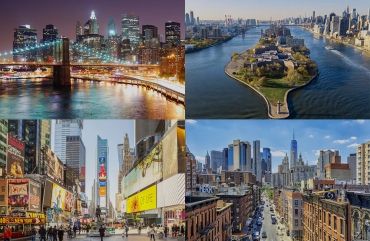History of Public Bus Transportation

Nowadays you can effortlessly commute from one place to another as there are countless ways to travel. Public bus transportation has become an essential part of our everyday life and it is hard to imagine how we would survive in this hectic world without it.
We use buses to get from our home to work, we rent them to travel around the country as our human nature requires comfortable conditions to move from place to place.
Also, it is one of the safest and cheapest ways to cover long distances. But have you ever thought about roots of public bus transportation and its history? If it is a mystery of you, then it is time to find out.
The first attempt to introduce the idea of public transportation was made by Blaise Pascal in 1600. He created the first so-called bus line in France, however instead of buses, there were horse-drawn carriages that could transport up to 8 people. They were also referred to as «Five-Penny Coaches» and only rich and nobility men could afford it at that time.
Although that incarnation of public transport was quite innovative, soon it quickly died off and even nobility people lost their interest in it. Fortunately, the main idea of «Five Penny Coaches» was never completely forgotten and got a second life in a hundred years.
The Omnibus
After Blaise Pascal endeavored to make something similar to the first public transportation system and it failed to become a success, the idea of public ground transportation started to gain considerable popularity in France. At that period, people could get around only by ferry and as time was rapidly developing, people felt the need of alternative land-based options to travel. In 1826, the first Omnibus appeared. In general it was similar to the initial Blaise Pascal’s idea, however it underwent some slight modifications.
The omnibus featured horse-drawn wagon but the number of animals to pull it depended on the size of the carriage itself. This time, the omnibus was affordable for everyone without any exclusion.
It became extremely popular among the people as it finally allowed them to get easily to different locations. Unfortunately, many people were dissatisfied with the quality of their rides as often it was very uncomfortable and challenging and they started to think about ways to improve it.
The Horsecar
The first horsecar, a carriage on rails pulled by horses, appeared in the United Kingdom. Compared to the omnibus, horsecars offered more comfortable ride as they were specially created to fit on rails that make the whole trip more pleasant for passengers. Also, it was easier for horses to pull it, so more people could get on board at once. Traveling by the horsecar started to cost less money, leading to its rapid popularity. As a result, more than 30,000 of horsecar rails were added to make it easier for people to get around.
But there was one huge drawback - horsecars could not be operated without horses and that became a great problem. Lots of streets were littered with their manure and they could only pull carriages no more than for two hours. In 1872, when thousands of animals died, society understood that there had to be more efficient travel solution and as horsecars started to lose their popularity, cable cars were invented to substitute them.
The Cable Car
It became clear that new method of public transportation had to work without labour animals being involved and inventors found a great alternative. In 1873, Andrew Smith Hallidie used another approach and created cable-driven systems that revolutionized public transportation as it eliminated the need for horses at all.
He developed that idea in San Francisco, California trying to deal with its steep hills. Instead of horse-driven wagons he used new cable cars that operated with the help of a moving cable placed between the rails.
That ideal of animal-free transportation rapidly spread from San Francisco to other cities in order to avoid negative side effects of horses in busy urban areas. However, the period of cable cars finished soon as after several unpleasant accidents it became clear that they are not safe enough to travel.
The Streetcar
It goes without saying that invention of the streetcar was one of the most significant discoveries of the 19th century. Electric streetcars were based on the cable car method but with one slight difference: they were powered by electricity. Now people got an opportunity to commute to different places without efforts and what is most important, streetcars became much safer than their cable car predecessors.
After a while, lots of cities switched to streetcars and no wonder: there still were rail lines spread across the cities while most people tended to use traditional horse-driven carriages. Invention of electric streetcars allowed people living on the suburbs of the city to get easily to their works and that considerably increased the employment rate of the country.
Public bus transportation has been undergoing great changes for centuries and modern charter bus service continues developing even now. It is difficult to predict what is waiting for us in future, but nowadays we have endless options to travel and that is amazing.
Categories
- Charter bus New York City
- Bus group transportation
- Bus airport transfers
- Corporate shuttle bus service
- Bus for every school event
- Bus trips to casinos
- Bus trips for seniors
- Church & religions trips
- Charter bus to Amusement parks
- Wedding charter bus rental
- Sports team charter bus
- Bus Transportation in New York City
- Private Charter Bus
- Contact us


